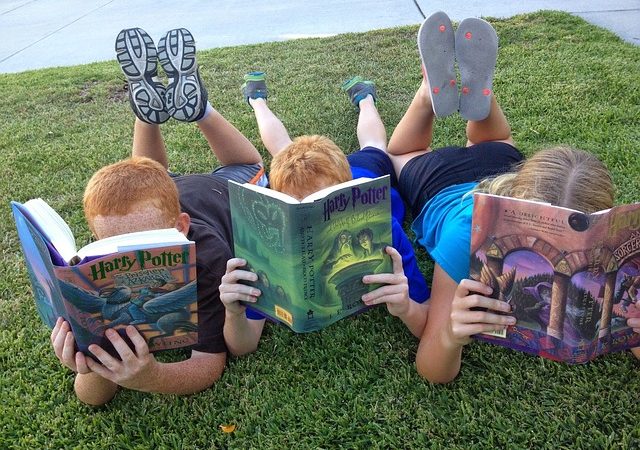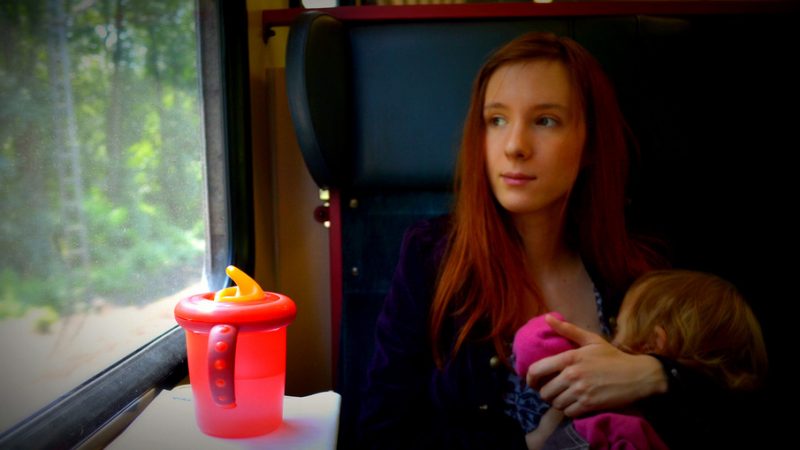
How girls and boys read: a Q&A with Dr Sarah McGeown
Dr Sarah McGeown of the University of Edinburgh joined us recently to answer our questions about how sex and gender affect why and what children read. Here’s what we discussed:
to answer our questions about how sex and gender affect why and what children read. Here’s what we discussed:
Hi everyone! I’m Sarah McGeown and I’m a Senior Lecturer in Developmental Psychology at the University of Edinburgh.
I have been carrying out research examining sex differences in children’s reading interests and their motivation to read. I am interested in acquiring a more nuanced understanding of sex differences and have been exploring the concept of gender identity to better understand children’s reading choices and their motivation to read.
As we know, not all boys are the same, and not all girls are the same – examining children’s gender identity allows us to understand the extent to which children identify with traditional masculine and feminine traits and the relationship between this and their reading choices and motivation to read.
PSG A: Nice to meet you! What ages are you looking at for gender identity questions? And reading preferences?
Sarah: For this study, it was aged 8-11. Most of my research is carried out with children of this age, however I also carry out research with adolescents. Most of my studies use questionnaires and I find that children younger than 8 sometimes struggle to complete these independently. It’s really important when conducting research to ensure that your measures are developmentally/age appropriate.
PSG C: Is your research based on only children in the UK or worldwide?
Sarah: Based on children in the UK only (at the moment!)
Q: Sarah, I really enjoyed your so-very-accessible poster about your research into sex and gender differences in children’s motivation to read. (It’s here for anyone who missed it: http://parentingsciencegang.org.uk/wp-content/uploads/2018/02/reading-motivation-sex-gender.pdf)
How did you measure children’s reading motivation and did your methods (or scales) change for the different ages?
Sarah: I measured reading motivation using a very well-known scale called the MRQ – it’s typically used with primary school aged children and I’ve used it in a number of previous studies I’ve conducted.
I created the measure of reading choices myself, using images of books aimed at boys, girls, or gender neutral. It’s always good to use established questionnaires (if appropriate) when conducting research. However, sometimes you need to create your own if it’s necessary for your specific research question.
PSG B: How does the scale work? Could you give us an example of what questions you ask the children and what sort of “result” on the scale you get?
Sarah: The MRQ has a series of questions which children agree or disagree with. It looks at different aspects of motivation to read such a challenge (e.g., I like hard challenging texts) or curiosity (e.g., I like to read about new things). Children state how much they agree or disagree with them.
PSG B: Sarah, I’m really interested by the idea of “hard” texts. It’s clearly an established question which is accepted to give good info – what do you think kids make of that sort of question? What do they think of as “hard”?
Sarah: In this context, I think it meant hard to read.
PSG E: From experience The Hobbit is hard to read when you’re under 9 yrs of age…
PSG F: How did you decide whether books were aimed at boys or girls? Does deciding that they were for boys and girls already presume that boys and girls are attracted to different things? Or do you take that as a given?
Sarah: Good question. For the study we are discussing I asked four people (undergraduate students) to look at a long list of fiction books and independently rate whether they were aimed at boys, girls or were gender neutral. For the questionnaire we used only those titles where there was agreement among all four people.
We selected books that we believed were ‘aimed’ at boys or girls. That’s not to say that I believe that there are ‘boys’ book and ‘girls’ book. Nothing could be further from the truth!
Q: How much has peer influence been looked at? My son has read a lot of the Adam Blade Beast Quest series (zzzz!) and was certainly influenced by seeing what older boys were reading and by looking at the cover illustrations. I try to balance it out with things like Pippi Longstocking.
PSG D: When we introduced gender neutral books to our classroom, boys and girls loved them equally.
Sarah: Fantastic! I’m not sure how much research has looked at peer influences – but I expect there is some. We certainly know that girls are more likely than boys to transcend gender boundaries when it comes to book reading (that is, girls are more likely to read books aimed at boys than boys are to read books aimed at girls). Whether boys are more influenced by their peers, I don’t know.
PSG H: I haven’t had a chance to read into it properly yet, but I have recently seen suggestion that the social penalties of veering away from stereotypical behaviour are higher for boys than for girls. Maybe this affects the strength of peer pressure?
PSG I: Is this also due to the societal view (not by anyone here I can’t imagine!!) that “girls things” are lesser than “boys things”? So reading about girls would be demeaning, essentially, for a boy, as boys should be manly and not interested in girl’s lives. Homophobia might also come into play there.
Sarah: Yes, I’d agree with this.
PSG J: My big bugbear is the lack of books that feature girls and boys as equals, playing together, having adventures together. The Wrigglesbottom Primary books by Pamela Butchart are one of the few examples I’ve come across where this is not the case.
Q: In my little experience, reading motivation seems to be more connected to nurture than nature. In fact I’ll argue, based on my experience, that it’s overwhelming nurture based. What do you think / what did you find – nurture over nature or the other way around?
Sarah: I like this question about nature vs nurture. I’m not sure…..
Certainly being brought up in an environment where reading is valued and where parents/carers read to their child frequently is important. However, in one research study I conducted I found that children’s personality traits were actually a very strong predictor of their motivation to read. This suggests that reading motivation may be quite resistant to change.
PSG C: Fascinating. And what age would you say these personality traits become obvious?
My children are only little but I doubt they could be other than love reading, because reading is a very important of their parents’ lives; our home is filled with books and we read to them lots (my husband does, way more than me). My pre-schooler son loves reading, and I hope it’s the same for my daughter when she’s old enough. In their case, I see it being all down to nurture.
Sarah: Sounds like you are doing everything right! Having a father / male role model who reads is very important.
PSG H: When you say personality traits, what do you mean?
Sarah: I used a personality questionnaire which measures the Big 5 personality traits – openness to experience, conscientiousness, extraversion, agreeableness, and neuroticism. (check out: https://en.wikipedia.org/wiki/Big_Five_personality_traits)
PSG H: That’s interesting. And which ones predicted motivation to read?
Sarah: Openness to experiences was by far the strongest predictor of motivation to read.
Q: I have a pre-schooler who loves to read and is a boy. Is this likely to last?
Sarah: I think the challenge is keeping boys interested in reading. You generally find that children’s attitudes to reading get worse as they get older, and this is particularly true for boys.
Q: Fascinating area of study! I know you said that your current research is focused on 8+, but is there any research into earlier differences appearing?
Sarah: In my paper I cite a study by Chapman with younger children. They found that at first grade (in the US), children have gender stereotypical beliefs about what boys and girls like to read (even if they don’t conform to these stereotypes themselves).
You can read this study here: https://files.eric.ed.gov/fulltext/EJ780784.pdf
Q: Have you done any research with home-schooled children? Do you know if there’s a difference in attitudes towards reading in home-schooled children and those who go to school?
Sarah: I don’t know of any research comparing home and school educated children – I expect the people in these children’s lives are more important, than their place of study.
Q: There is an assumption that boys will only read books about male characters. But the majority of books have male characters rather than female and I’d imagine stereotypical “boy” books are about male characters. is there any evidence that the gender of the character matters? Or is the subject matter more important but the assumption is made that boys won’t read about girls?
Sarah: I’m not sure if it’s the gender of the character that matters, or the qualities of the leading character that matters (e.g., a strong, leading, confident character vs a soft, caring, kind leading character).
PSG F: So there isn’t anything concrete that boys won’t read about girls? Can we get schools, publishers and literacy charities on board with this!?
PSG D: This article in the Guardian is worth a read, talks about the lack of female main characters in children’s books but also that most of the villains are male…not great messages for our children.
PSG E: Oooo, good point. ‘Stranger danger’ was always about a male character as I remember it from school.
Q: I’m concerned about stereotypes and how they influence children’s beliefs about behaviour. Where you’ve found evidence of personality traits affecting motivation, is there a correlation between groups of certain personality traits that would be stereotypically considered feminine and masculine, and motivation? If so, could this be influencing adult (teachers, parents) attitudes to individual children’s motivation to read?
Sarah: The personality traits we have studied are the big five – extraversion, conscientiousness, agreeableness, open to experiences and neuroticism. I don’t believe any of these personality traits are regarded as particularly male or female.
In the gender identity questionnaire I used though, the characteristics generally considered male included: leadership, dominance, aggression, confidence. While those considered female included kind, caring, compassionate, likes children.
Q: We have found raising girls’ confidence has been easier than getting boys to talk about and express their emotions, do you recommend any good books that could help with this?
Sarah: Sorry, I don’t.
PSG F: Letterbox library is probably a good place to start: https://www.letterboxlibrary.com/acatalog/Book_Themes.html
Also these http://www.partnershipforchildren.org.uk/GBTTHome.html
PSG D: Thank you . I love Letterbox Library, but I’ve not seen the second link before
PSG H: Margot Sunderland has written some, and there are probably other authors too. They aren’t the most fabulous pieces of literature, but I’ve used them and they’ve opened up discussions with both boys and girls.
Q: Does a child’s motivation or ability to read at different ages depend at all on whether they like to learn in auditory, visual or kinaesthetic way? Would that make more difference than gender, if so have any studies on gender and reading corrected for it?
Sarah: I don’t think there’s any relationship between learning style and reading motivation / reading skill. In fact, there’s quite a lot of research questioning the whole idea of learning styles. But certainly some factors have a stronger influence on reading choices than gender (for example age is a stronger influence on reading digital texts than gender).
Q: Is there a difference between girls and boys regarding what age they get interested in reading? What sort of ages?
Sarah: I think, in general, young children are really interested in reading (if they have someone in their lives who reads to them frequently and in an engaging way). There are no sex differences that I am aware of in terms of age at which children get interested in reading. You do see a decline in reading attitudes with age though, and boys attitudes towards reading become more negative than girls at an earlier age.
PSG D: I haven’t seen any research but I wouldn’t imagine there would be, I just think sometimes we have different expectations of boys and girls?(Which needs to stop)
Sarah: I completely agree – parents do often have different expectations of boys and girls and parents may be more likely to read to their daughters than their sons.
Q: Sorry if this has been covered, Sarah: but I wondered if you or others have looked at how motivated boys and girls are to read the different ‘aimed at’ categories when they are presented without a cover?
PSG I: This would be a really interesting area. I know I always judge a book by its cover ? It’s striking how some books are very clearly aimed at boys, others very clearly at girls, and I imagine it would be difficult for children to choose from the ‘wrong’ section without it being commented on by other children. Yet some books have really excellent neutral covers.
Sarah: I don’t know of any research that has looked at this, but in focus groups that I’ve carried out with children, when I ask them how they decide which book to read, they very frequently mention the cover (not just the title, but the pictures, colours on the cover).
PSG P: It is a bit worrying. Because I guess inside these books the text has differences. I always notice that with McDonald’s happy meals you can claim a free book and often you get to choose between shiny dragon/ dinosaur adventure and pink unicorn soap opera.
PSG P: Be interesting to see how children connect with a text that’s not aimed at their gender if you package it up to the opposite effect.
Sarah: I carry out professional learning sessions with teachers and apparently it’s quite common in schools to cover the book covers with paper so children can’t see it before they start reading the text. Teachers are also concerned that book covers put some children off!
PSG P: A technique also seen in hipster bookshops and lately our local charity shop ?
Q: Where do you think the gaps in research are in this area? If you could wave a magic wand and get some research of your choice funded tomorrow, what would it be?!
Sarah: Oooh, what a great question! I’m currently just finishing up a study which looks at comparing boys and girls across a range of academic subjects (reading, writing, maths and science) – to see the extent to which a child’s sex vs gender identity predicts their attitudes to these subjects. I’d be interested in carrying out longitudinal research exploring changes over time. Or intervention work which challenges gender stereotypes and examining whether this has any long lasting impact.
PSG H: Research into intervention would be great!
PSG I: When you say ‘gender identity’ do you mean the extent to which they identify with masculine or feminine traits, as in your other linked research?
Sarah: Yes, that’s correct.
Q: Just to play devil’s advocate – we’re all focusing on books, but most children of 8+ spend more time on social media. Should we be researching gender differences there? Does it matter?
Sarah: I agree that reading habits are changing. While primary school aged children spend more time reading books, adolescents spend far more time with digital texts. The national literacy trust publish the survey of children and young people’s reading each year and you can see a trend over the last few years of more time with digital texts (based on UK sample of approx. 40,000).
PSG Q: Some of my undergraduate students can’t name one book that they’ve read in its entirety – and they’re all female
Sarah: Very worrying!
Q: Do you have any opinion on the impact of set homework books on motivation to read in boys and girls? We have five a week in year 1? Think this is quite common?
Sarah: Sorry, I don’t know of any research looking into this.
PSG B: I’d love to see some research into this too! I think a year of Biff and Chip (or that terrible sci fi one that my daughter keeps bring home) would be enough to put off anyone!
Q: Our group are particularly interested in girls’ and boys’ book choices (when old enough to be independent readers) especially their choice of and how they relate to protagonists of the same / opposite sex.
If we choose this as our research topic, please could I ask if you have any advice or tips for us as to how to tackle this topic / Where to start?!
Sarah: I probably couldn’t give any advice in such a short time frame – but feel free to send me an email and I’d be happy to give advice at a later date!
PSG B: Oh yes please!
PSG G: Fantastic thank you! We’ll be voting for our top topic to research soon, and it looks like this one is firmly in the running! We’ll let you know.
Inspired? Want to get involved in our research on gender stereotypes? Why not join the Let Toys be Toys Parenting Science Gang on Facebook.
And why not read some of our other Q&As on gender:
- How different are women’s and men’s brains? with Gina Rippon
- Being Boys, Being Girls with Carrie Paechter
- Stereotypes: breaking the rules with Rebecca Asher


